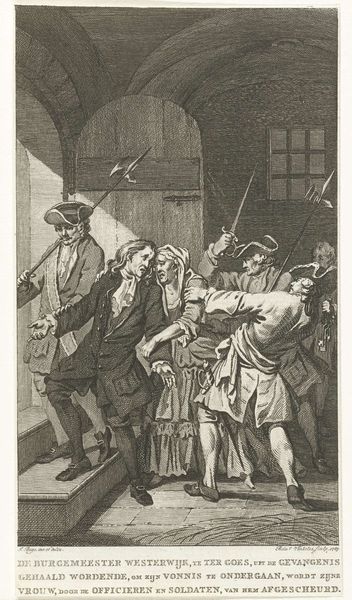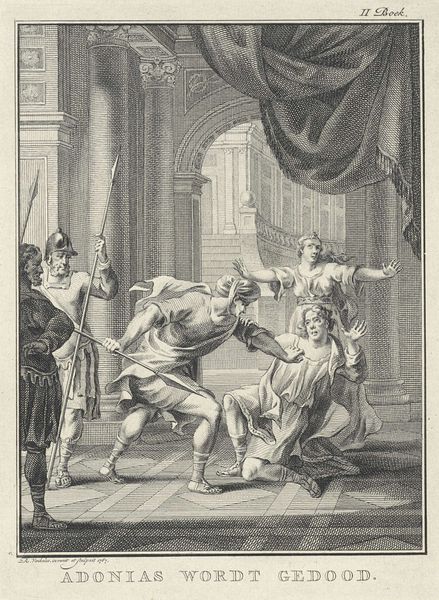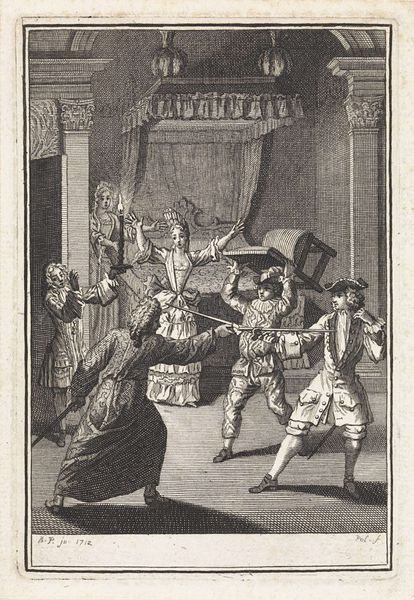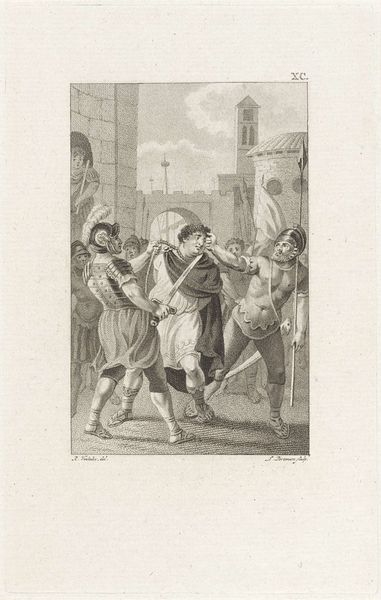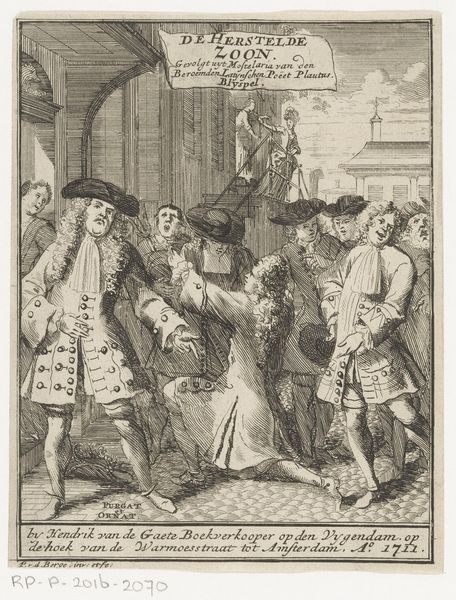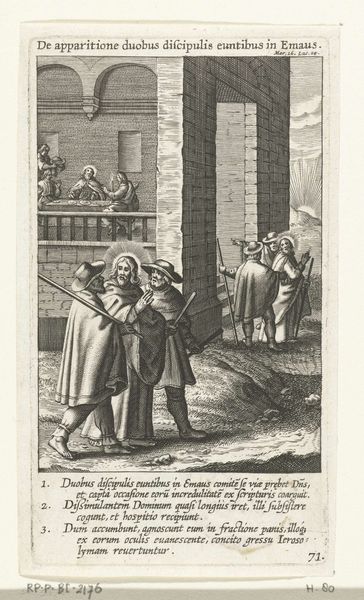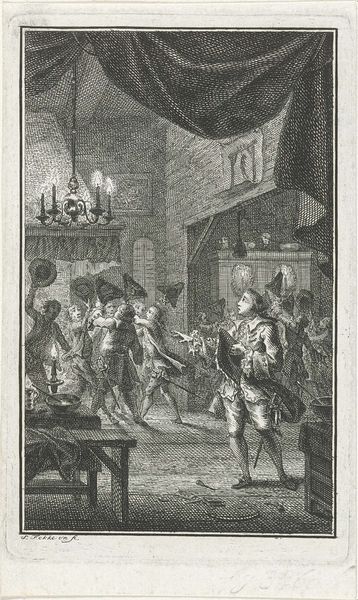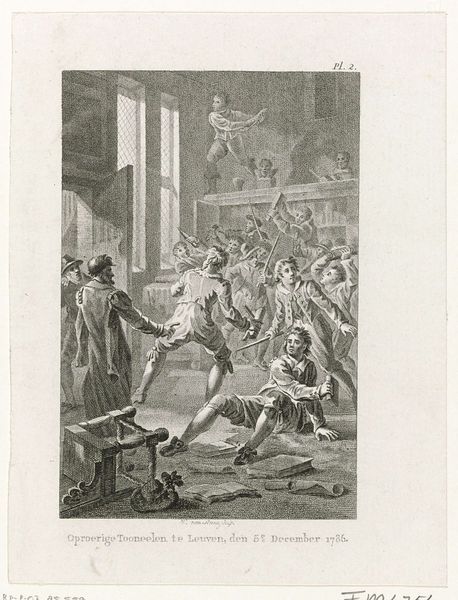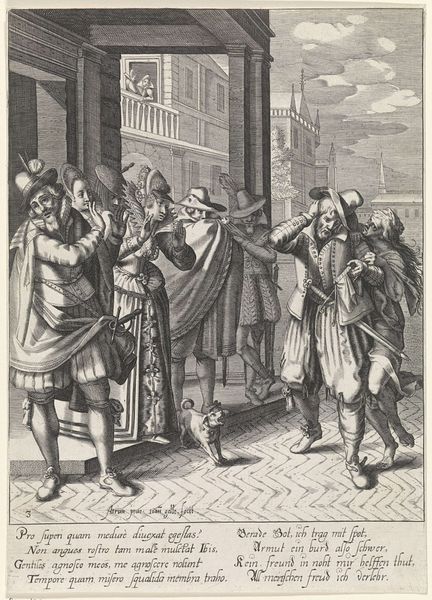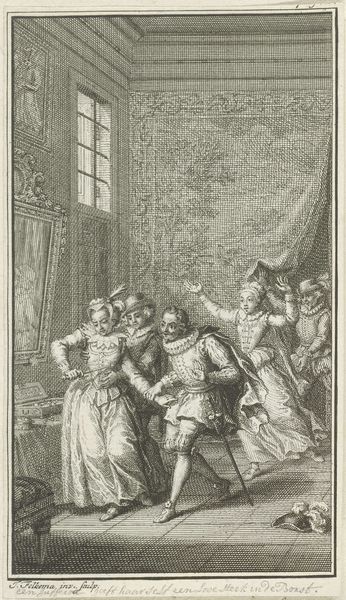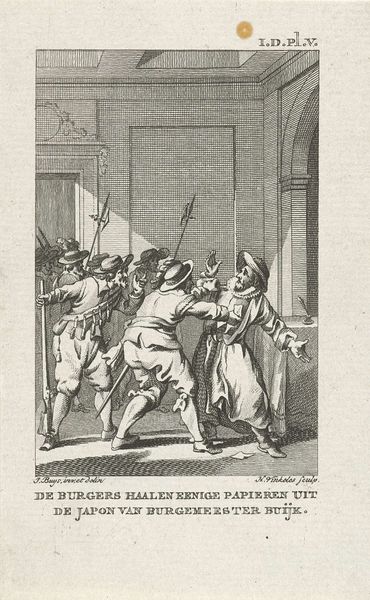
print, engraving
#
baroque
# print
#
old engraving style
#
figuration
#
history-painting
#
engraving
Dimensions: height 134 mm, width 90 mm
Copyright: Rijks Museum: Open Domain
Editor: This is "Agrippa before the House of his Lover," a 1734 engraving by Jan Punt. I’m struck by the detailed line work, especially in the figures' clothing and armour. What's interesting is that it seems that the eye of the artist does not follow a traditional one-point perspective rule. It feels dynamic but slightly unsettling. What do you make of this piece? Curator: The piece is fascinating from a formalist perspective. Notice the artist's manipulation of space; it defies a strictly rational depiction, creating an effect of depth that appears distorted but which introduces drama. Note how the lines direct the eye toward Agrippa, positioning him at the centre of the composition while not following usual proportional guidance, making it clear that Agrippa is the core and soul of this artwork. Editor: I see what you mean. It's almost like a stage set. So what you're pointing out is that distortion is itself part of the communication of the artwork? Curator: Precisely. Look at the balcony. The way it juts out creates tension, as the figures in the balcony are closer to the upper frame than the head of the main subject in the artwork, so the attention may fall to an undesired section. It introduces dynamism within what is otherwise a still, frozen moment. And the textures, consider them. Editor: Textures? Curator: The stark contrast between the smooth surfaces of the building and the busy line work that renders clothing of Agrippa makes that space feel real, material. It makes the action feel immediate, yet trapped and fixed in time. It all points to an intense, emotional narrative being expressed primarily through form. Editor: That’s given me a whole new appreciation for engravings. It's not just about historical storytelling, it’s about the very language of line and space. Curator: Indeed, we should ask, what are the qualities and capabilities of a line as it presents itself and moves the eye? And it is in there where the narrative is told, not outside of it.
Comments
No comments
Be the first to comment and join the conversation on the ultimate creative platform.
